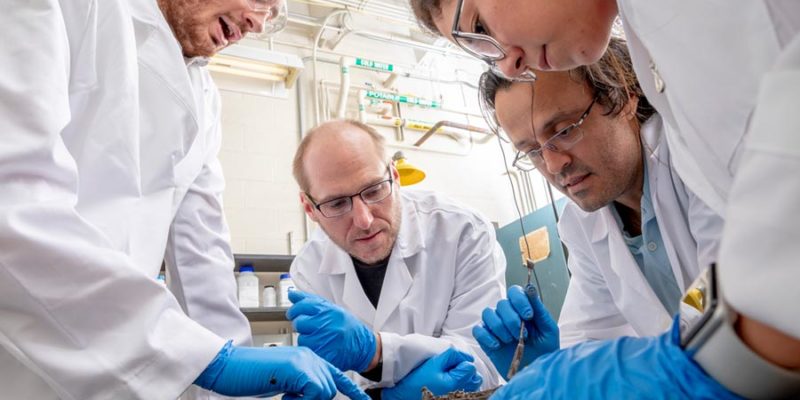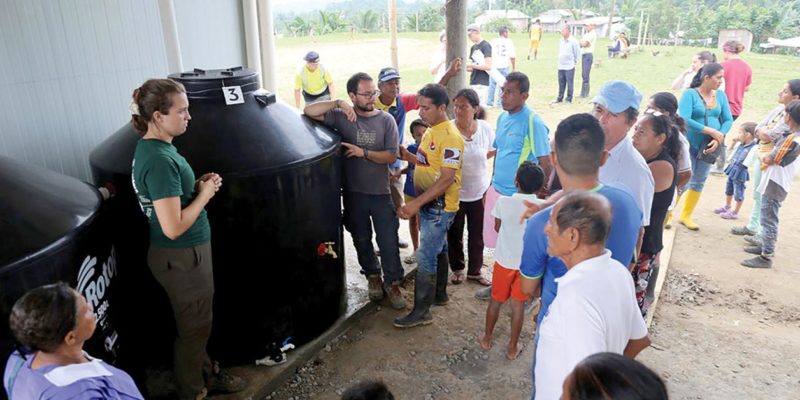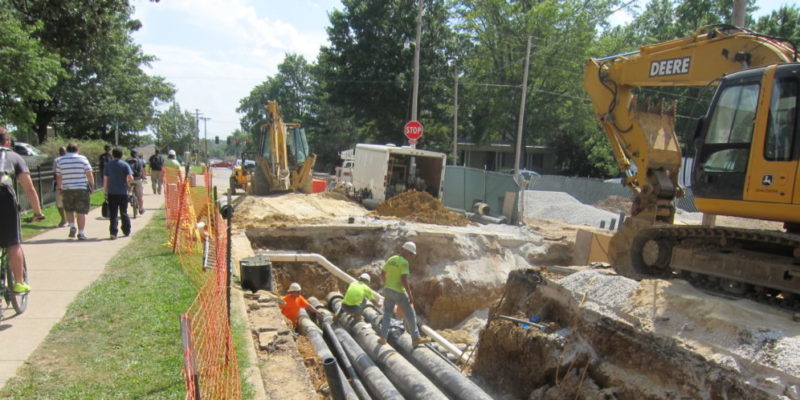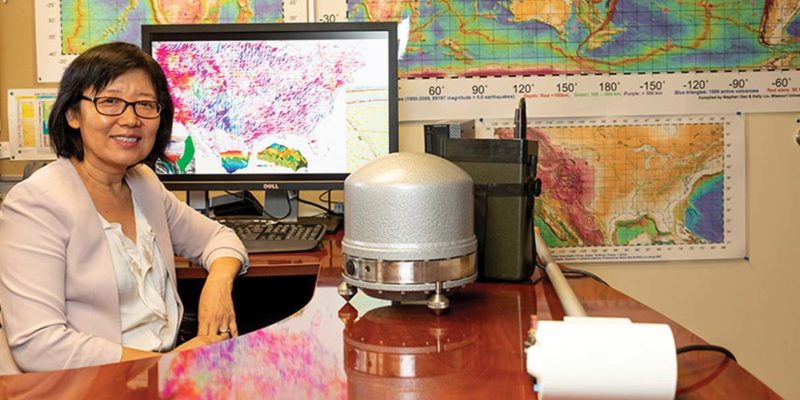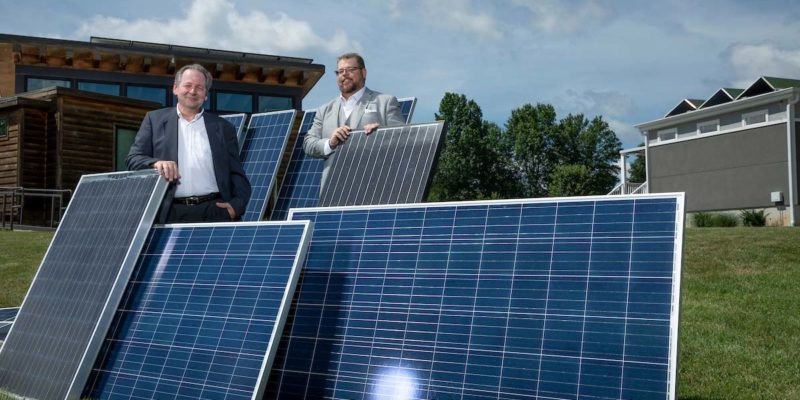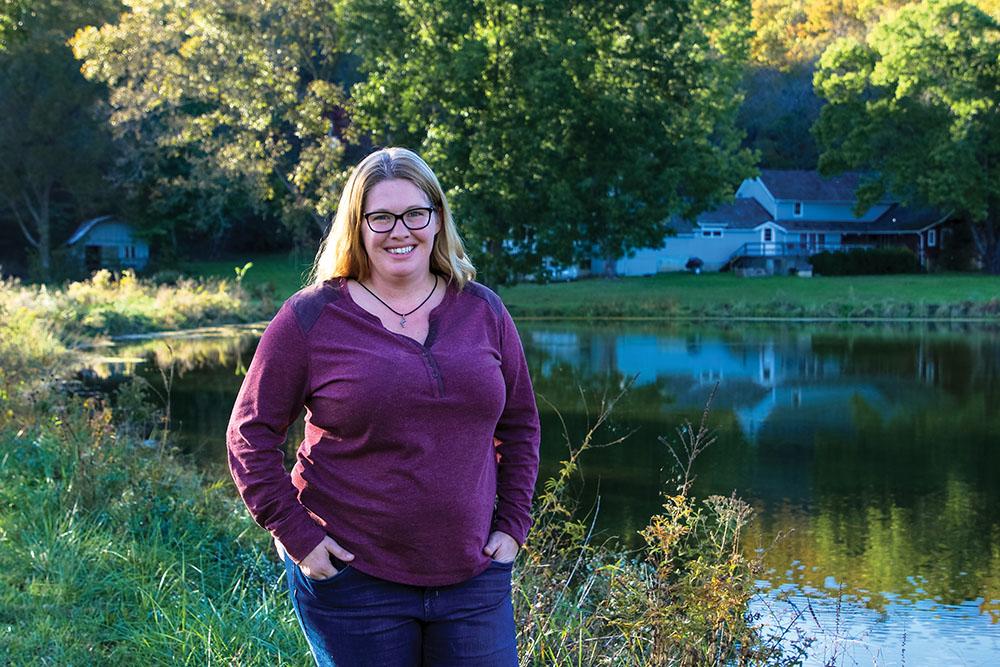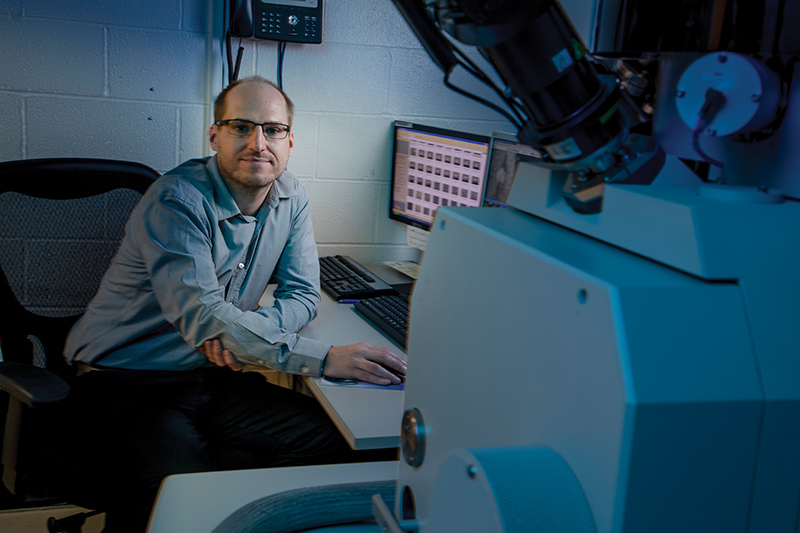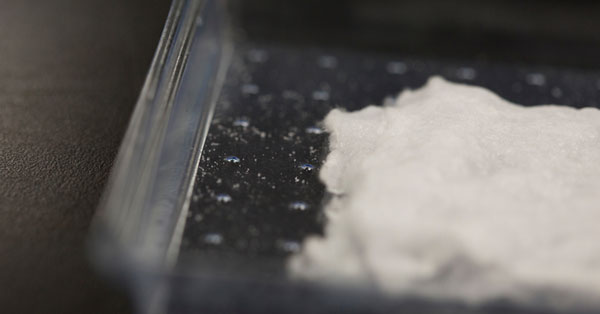Research
Is there nickel in ‘them thar hills’?
Major discoveries of metals with scientific and economic significance — metals like nickel, copper and platinum — are becoming few and far between, which seems to suggest that most deposits that are easy to access have already been found.
Read More »Bringing clean water to South America
Assessing water quality, surveying mountaintop locations and building systems to catch rainwater — that’s how members of S&T’s chapter of Engineers Without Borders spent their summer break.
Read More »Geothermal goals exceeded
After five years of operation, Missouri S&T’s geothermal energy system continues to outperform expectations. S&T facilities operations staff originally predicted the geothermal system would reduce campus water usage by over 10% — roughly 10 million gallons per year. The system, which went online in May 2014, cut actual water usage by 18 million to 20 […]
Read More »Predicting earthquakes by analyzing the past
This past summer’s southern California earthquakes, one a 6.4 magnitude and another a 7.1 magnitude, make accurately predicting when and where the next one will occur more important than ever.
Read More »Recycle your Solar panels
The U.S. gets about 2.3% of its electricity from solar energy, and solar energy use is only expected to grow. By some estimates, nearly half a million solar panels are installed every day. But what happens to all those panels once they’re no longer usable in 20–30 years?
Read More »Testing the road before it’s built
Two recent Missouri S&T graduates used a driving simulator to help a civil engineering firm evaluate a new roadway design for the $18.6 million Route 160 widening project from Springfield to Willard, Mo.
Read More »Studying the wind
Less than 24 hours after tornadoes swept through communities across Missouri last May, Guirong “Grace” Yan was inspecting the damage in Jefferson City, one of the cities hit by the tornado outbreak.
Read More »Eco-investigator
Tracking the state of the ecosystem by studying its forests, fires and insect population is what makes Robin Verble tick, and she uses her findings to help advance healthy and sustainable management of natural areas.
Read More »The beginning of life as we know it
Approximately 2.4 billion years ago, the Great Oxidation Event dramatically increased the oxygen content in Earth’s atmosphere and paved the way for the rise of all lifeforms that use oxygen to break down nutrients for energy. Scientists agree about when the event happened, but they are less certain about exactly how.
Read More »UM System funds four new research centers
Missouri S&T will soon establish four new research centers and laboratories that build on the university’s strengths in materials science and engineering, civil infrastructure, and electrical power systems thanks to funding from a multicampus initiative of the University of Missouri System.
Read More »